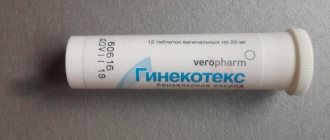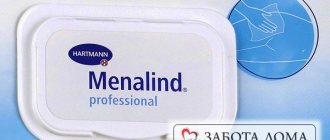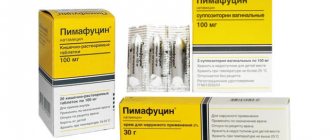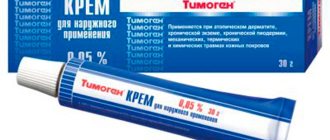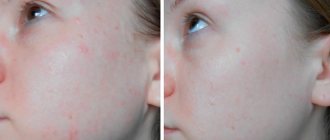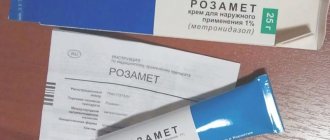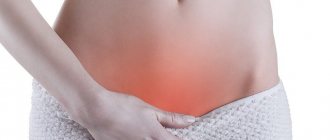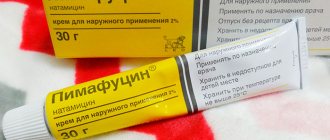Pharmacological authorities
Pharmacodynamics.
Ketoconazole is a synthetic derivative of imidazole dioxolane, which has fungicidal and fungistatic activity in dermatophytes such as Trichophyton sp., Epidermophyton sp., Microsporum sp.
., and yeasts such as
Candida sp.
and
Malassezia furfur (Pityrosporum ovale).
Shampoo with ketoconazole quickly reduces the flaking and itching that is often associated with loupe, seborrheic eczema and lichen lichen.
Pharmacokinetics.
After local use of Dermazol® shampoo instead of ketoconazole, there is no significant difference in blood plasma levels. Plasma levels after local stagnation with ketoconazole shampoo were detected after application to the entire surface of the body.
Pharmacological properties
Dermazol has a fungicidal effect
The pharmacological effect of ketoconazole is a disruption of the production of ergosterol in the cell membranes of pathogenic fungi. This explains the fungicidal and fungistatic effect of the drug.
Ketoconazole is most effective in combating yeast and yeast-like fungi. Preparations based on it are most often prescribed for skin and mucous membranes affected by Candida or Malassezia fungi. However, Dermazol is also effective against dermatophytes and epidermophytes. The ointment is often used in the treatment of microsporia and trichophytosis. The drug exhibits the least activity against molds and dimorphic fungi.
Ketoconazole is active against gram-positive cocci, as a result of which it can be used in the treatment of mixed infections, including those of the genital organs.
When applied externally, the medicine is practically not absorbed, which means it does not enter the general bloodstream and does not have a systemic effect on the body. This does not apply to tablets and suppositories, although the latter act locally, being completely absorbed by the vaginal mucosa.
Features of good stagnation
To prevent urinary syndrome during trival local treatment with corticosteroids, it is recommended to continue the local treatment with corticosteroids in patients with Dermazol® shampoo with further step-by-step administration of corticosteroids. home 2-3 years.
Unique contact shampoo with ochima. If you get shampoo in your eyes, you must rinse them with water.
The drug contains butylhydroxytoluene (E 321), which can cause local skin reactions (such as contact dermatitis) or swelling of the eyes and mucous membranes.
The drug contains propylene glycol, which may cause skin irritation.
Suspension during pregnancy or breastfeeding.
No well-controlled or well-controlled studies have been conducted on pregnant wives and mothers during breastfeeding. After local treatment of the skin with shampoo containing ketoconazole in non-viable women, the concentration of ketoconazole in blood plasma did not increase. Plasma levels after local stagnation with shampoo with ketoconazole were detected after application to the entire surface of the body. Due to a number of factors that may lead to the risk of drug administration during pregnancy or breastfeeding, it is not contraindicated.
This is due to the fluidity of the reaction during treatment with vehicles or other mechanisms.
Dermazol®, shampoo, does not flow onto the surface of the body by vehicles or use other mechanisms.
Composition and release forms
Dermazol is available in several dosage forms
Four products are produced under the name “Dermazol”:
- two types of shampoo;
- cream;
- pills;
- vaginal suppositories.
The main active ingredient of each drug, regardless of the release form, is the antimycotic ketoconazole.
The shampoo contains 2% ketoconazole, that is, 1 ml of shampoo contains 20 mg of the active substance. It is available in two versions: Dermazol shampoo and Dermazol Plus. The differences lie in the release form and composition.
Dermazol shampoo is available in the form of sachets (sachets) of 8 ml, the package contains 20 sachets of product. The composition contains a number of auxiliary and foaming substances, including propylene glycol, imidourea and sodium lauryl ether sulfate. The composition cannot boast of being natural, as it contains aggressive preservatives and foaming agents.
Dermazol Plus contains an additional 1% zinc pyrithione. This shampoo is available in bottles of 50 or 100 ml. The form-building components completely repeat the composition of Dermazol shampoo.
Dermazol cream also contains 2% ketoconazole. The soft form of the product is provided by paraffin, mineral oil, propylene glycol. The cream is quickly absorbed and gives a feeling of comfort. Dermazol ointment is available in tubes of 15 and 30 g.
Dermazol tablets contain 200 mg of ketoconazole each. The composition also contains cellulose, silicon dioxide, magnesium stearate. The drug is sold in 10 and 30 tablets in cardboard packaging.
Dermazol in the form of suppositories - suppositories with 400 mg of ketoconazole in each. They are packed in blisters of 5 pieces, 1 or 2 blisters in each cardboard package. The composition contains solid fat, which ensures the dissolution of the candle under the influence of body temperature.
All products in the Dermazol line contain the same ingredients and composition. Each release form differs only in the dosage of the active substance and indications for use.
Method of congestion and dosage
At the beginning of the plot, apply Dermazol® shampoo for 3-5 minutes, then rinse with water.
Likuvannya:
- magnifying glass and seborrheic dermatitis (seborrheic eczema): 2 times per week for 2–4 weeks;
- Lichen lichenoidus: generally last 5 days.
Prevention:
- seborrheic dermatitis (seborrheic eczema): every day or 1 time per 2 days;
- Tinea versicolor: preferably 3 days (one-time course of treatment) before the start of the summer season.
Children.
The safety and effectiveness of drug administration in children under 12 years of age has not been established.
Indications for use
Dermazol is used in the treatment of seborrhea
Dermazol instructions suggest use in the treatment of various mycoses. The exact indications for use depend on the form of release of the drug.
Indications for use of the ointment:
- mycoses of the skin caused by fungi sensitive to ketoconazole;
- athlete's foot inguinal;
- skin candidiasis;
- pityriasis versicolor.
Shampoos Dermazol and Dermazol Plus are used in the treatment of seborrhea, seborrheic dermatitis and pityriasis versicolor on the head. As a preventive measure, shampoo is prescribed for moderate dandruff, or to reduce the risk of its reappearance after a course of treatment.
Indications for use of drug tablets:
- superficial recurrent fungal skin infection;
- deep systemic mycosis;
- onychomycosis;
- generalized candidiasis;
- chronic mucosal candidiasis;
- vaginal candidiasis in severe and chronic form;
- candidiasis of the oral cavity and digestive tract.
Tablets are prescribed in addition to external use - ointments, suppositories or shampoos. This is the only prescription form of the drug.
Dermazol in the form of suppositories is intended for the treatment of vulvovaginal candidiasis in women. The drug is prescribed for both chronic and acute recurrent thrush.
The peculiarity of drugs based on ketoconazole is that pathogenic microflora do not develop resistance to the action of this substance. This ensures high effectiveness of treatment without the risk of reducing the therapeutic effect if a repeated therapeutic course is necessary.
Side effects
On the side of the immune system:
hypersensitivity reactions, including angioedema and urticaria.
From the side of the skin and under the skin:
alopecia, dry skin, change in hair structure, sagging, liver skin, acne, contact dermatitis, dry skin, changes on the sides of the skin, increased peeling of the skin, increased oiliness or dryness there is hair, change hair color (mainly in patients with chemically skinned or sivim hair).
From the side of the organs:
increased lacrimation, teasing of the eyes.
On the side of the nervous system:
dysgeusia (impaired sense of taste).
Infections and invasions:
foliculitis.
Underlying disturbances and reactions in the place of stagnation:
erythema, teasing, itching, due to discomfort, hypersensitivity, pustular swelling at the site of application.
Contraindications and restrictions for use
Dermazol ointment and shampoo are contraindicated for children.
Precautions and contraindications for Dermazol also depend on the form of release. The shampoo can be used by everyone without exception, the only contraindications are childhood and intolerance to the active substance or other components in the composition.
The ointment is not used if you are intolerant to ketoconazole. The product in this form of release is prohibited for use in ophthalmology.
Contraindications to the use of tablets:
- intolerance to the active substance;
- body weight less than 30 kg;
- liver pathologies in acute or chronic form;
- pregnancy and lactation.
For children, tablets should only be prescribed by a doctor. The dosage is selected individually, depending on the patient’s body weight and indications for use.
Suppositories are not prescribed only in case of intolerance to the main active ingredient.
Pregnant women can use any form of the drug, except tablets. However, the absolute safety of ketoconazole for the fetus has not been proven, so the use of products based on this substance should be agreed with a doctor. As a rule, Dermazol for external and local use is prescribed to pregnant women only when the benefits to the health of the mother greatly outweigh the potential risk to the fetus. The same restrictions apply to the lactation period.
Children should not use Dermazol ointment and shampoo. This is due to the lack of research on the effect of these drugs on the children's body. Suppositories are not used in pediatrics; they can only be used by adult women.
Since the metabolism of tablets occurs in the liver, this form of release of the drug is contraindicated in patients with impaired organ function. Elderly patients at risk of developing liver pathologies should use tablets only as prescribed by a doctor. In some cases, the possibility of therapy with low dosages of the drug may be considered.
Cost and analogues
Nizoral is one of the analogues of Dermazol
You can buy Dermazol at any pharmacy. All forms of the drug, except tablets, can be purchased without a prescription.
Dermazol, the price of which depends on the form of release, has many analogues, both cheap and expensive. The cost of the cream is about 300 rubles, shampoo – 600 rubles, tablets – 600 rubles per package. Suppositories will cost about 300 rubles.
Popular analogues and substitutes for Dermazol in shampoo form:
- Nizoral;
- Sebozol;
- Keto Plus;
- Ketozoral;
- Orazol;
- Dandruffed.
Their cost ranges from 300 to 900 rubles, depending on the volume of the bottle and the country of origin.
If necessary, replace Dermazol cream with analogues represented by the following drugs:
- Nizoral;
- Mycozoral;
- Sebozol;
- Ketoconazole.
The cost of creams and ointments is from 200 to 300 rubles. An analogue of tablets is the drug Ketoconazole and Nizoral, an analogue of suppositories is Levorol suppositories.
Side effects
The use of the drug in tablet form may cause menstrual irregularities
The description given in the instructions for Dermazol indicates the following side effects when using ointment and shampoo:
- erythema (redness) of the skin in the application area;
- swelling of the skin;
- alopecia areata;
- itching and peeling;
- hives.
If an allergic reaction develops, use of the drug should be discontinued and symptomatic treatment performed.
When using suppositories, there is a possibility of local irritation. This is manifested by swelling of the external genitalia, burning and itching after insertion of the suppository. As a rule, such side effects are short-lived and disappear within a few minutes.
Side effects of the tablets:
- dyspeptic disorders;
- nausea and vomiting;
- stomach ache;
- diarrhea;
- headache;
- increased activity of liver enzymes;
- menstrual irregularities;
- photophobia;
- allergic reactions.
Long-term therapy with large doses of internal ketoconazole can cause impotence, gynecomastia and oligospermia in men. If severe side effects occur from taking the pills, you should consult your doctor about discontinuing the drug and further treatment.
Drug interactions Dermazol tablets
Avoid simultaneous use of drugs that reduce gastric acidity (antacids, H2 receptor antagonists, proton pump inhibitors). If these medications are prescribed, they should be taken no earlier than 2 hours after taking Dermazol. The simultaneous use of isoniazid or rifampicin reduces the concentration of ketoconazole in the blood plasma, so these drugs should not be taken during treatment with Dermazol. Ketoconazole inhibits the activity of some liver cytochrome P450 enzymes (especially enzymes of the CYP 3A group) and may slow down the inactivation of drugs whose metabolism depends on the action of these enzymes. Increased plasma concentrations of drugs prescribed in parallel with ketoconazole may enhance and/or prolong the period of their therapeutic effect, including the possibility of developing side effects. Known examples of potentially dangerous interactions:
- terfenadine, astemizole, cisapride, midazolam and triazolam for oral use. Increased plasma concentrations of these drugs can lead to prolongation of the QT on the ECG and the development of ventricular tachycardia such as flutter and fibrillation. This interaction is also possible with HMG-CoA reductase inhibitors (lovastatin). Concomitant use of such drugs with ketoconazole is contraindicated. midazolam intravenously , precautions must be taken as its sedative effect may be prolonged.
- cyclosporine, anticoagulants, methylprednisolone, bisulfan and tacrolimus. The doses of these drugs need to be reduced. When drinking alcohol during ketoconazole therapy, in exceptional cases, a disulfiram-like reaction to alcohol was detected, characterized by hyperemia, rash, peripheral edema, nausea and headache, which completely disappeared within several hours.

